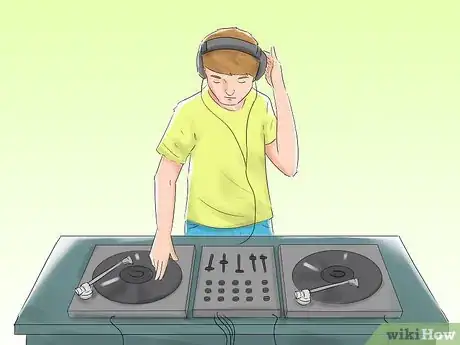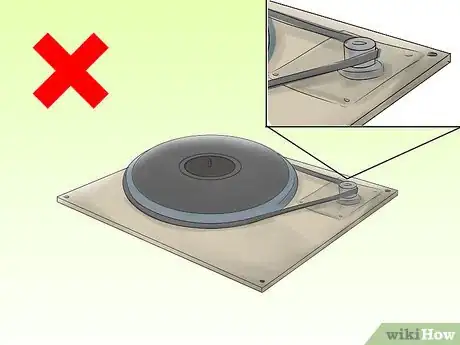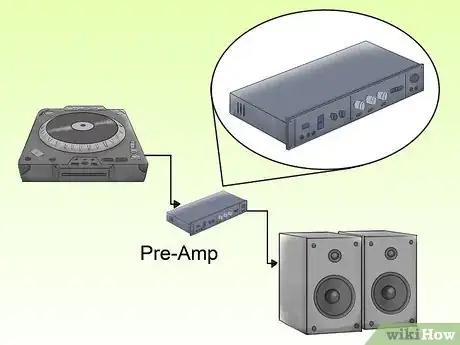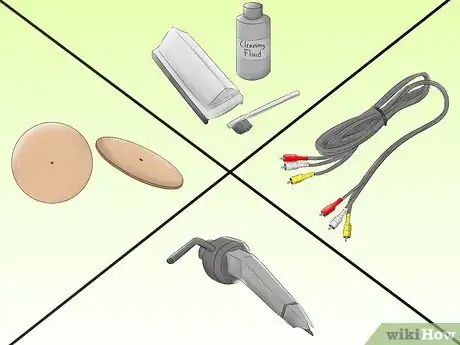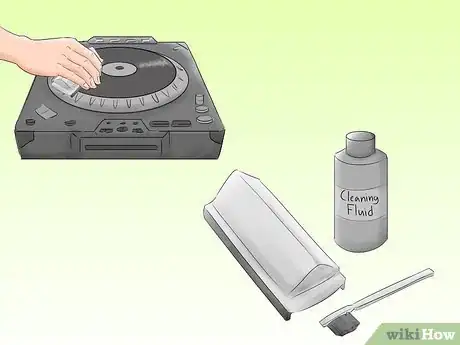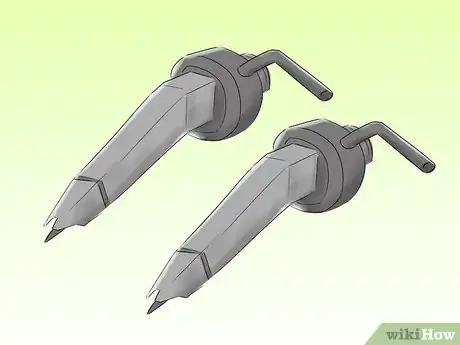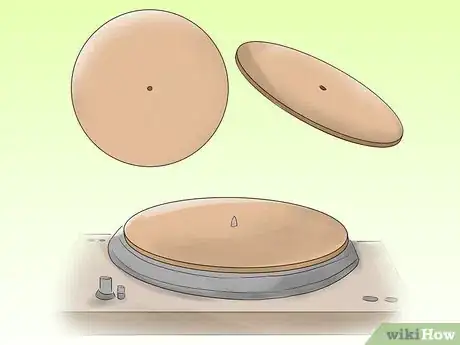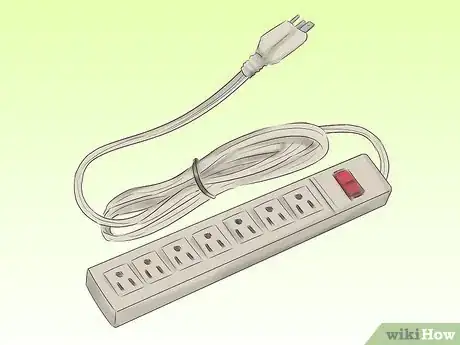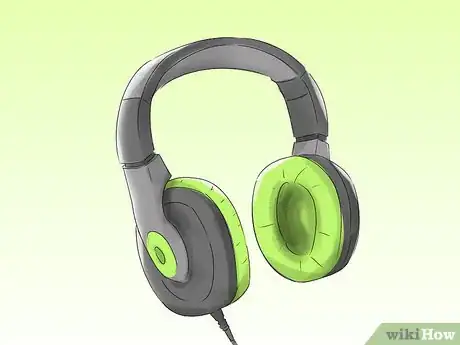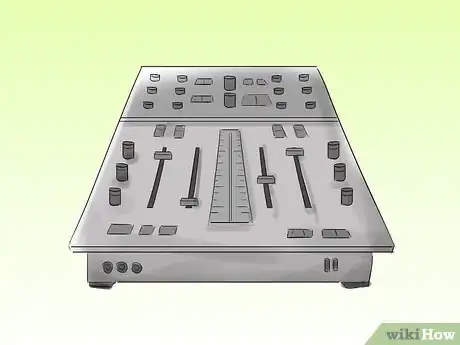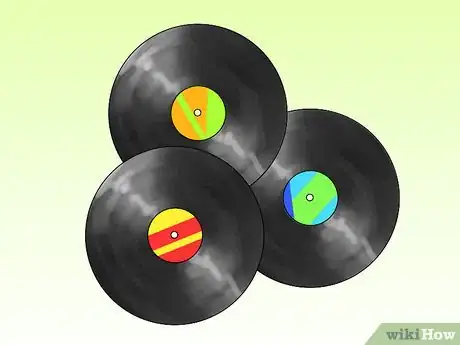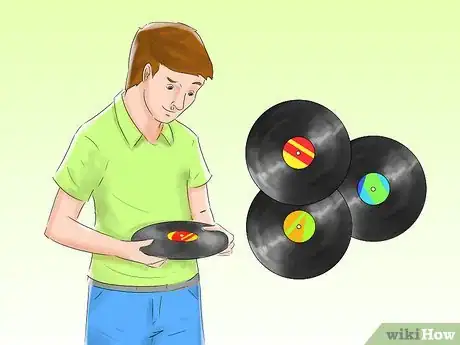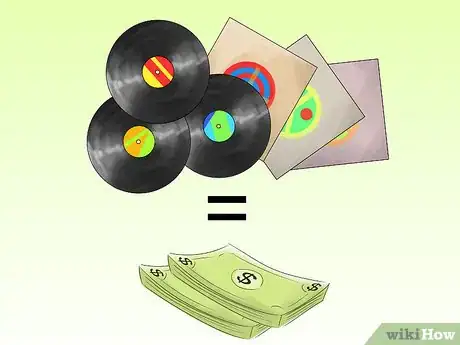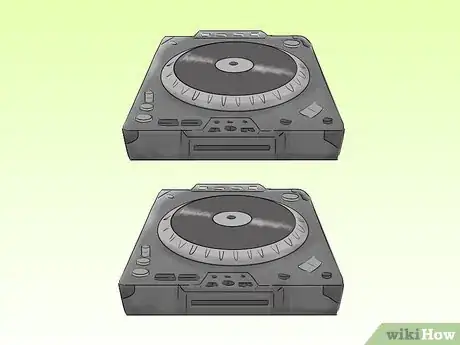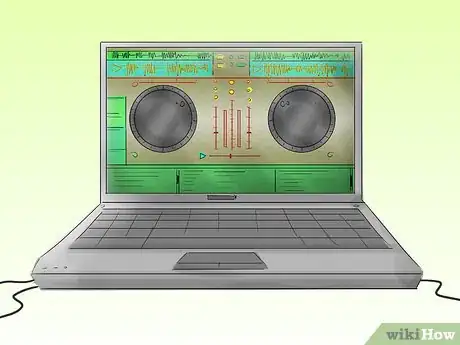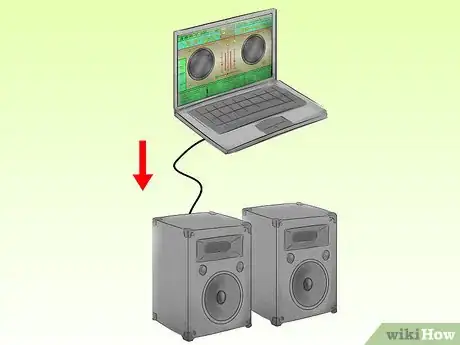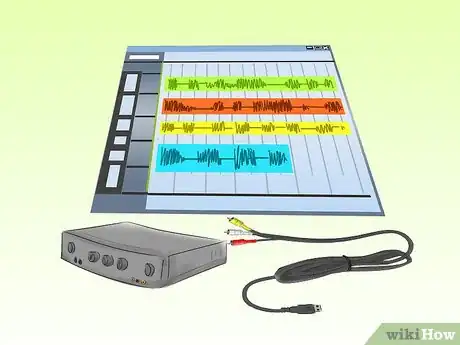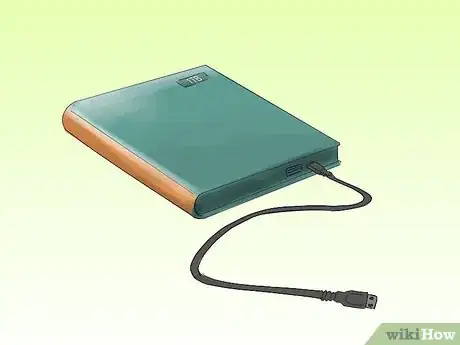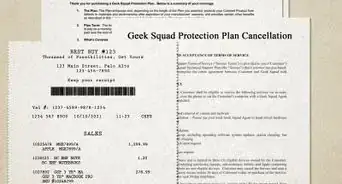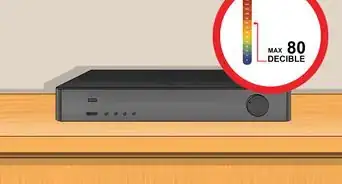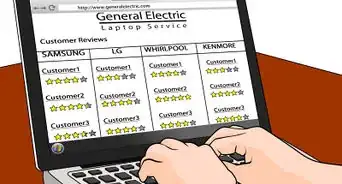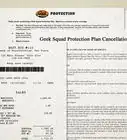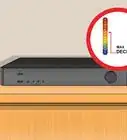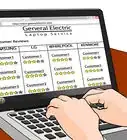This article was co-authored by Timothy Linetsky. Timothy Linetsky is a DJ, producer, and music educator that has been making music for over 15 years. He is a certified Ableton trainer and creates educational YouTube videos focused on producing electronic music. He has over 90,000 YouTube subscribers.
wikiHow marks an article as reader-approved once it receives enough positive feedback. In this case, several readers have written to tell us that this article was helpful to them, earning it our reader-approved status.
This article has been viewed 446,588 times.
If you want to be in control of the dance floor, you need to be behind the turntables. Jumping into being a DJ is an exciting challenge, but the amount of gear and choices can be somewhat overwhelming for a beginner. Fortunately, you can learn about a solid digital or analog set-up which would help make sure that you've got all the necessary equipment to make killer playlists and get people dancing. See Step 1 for more information.
Steps
Getting a Traditional Vinyl Set-Up
-
1Get two direct-drive turntables. Any basic DJ set-up must involve two record players for you to simultaneously play one song while beat-matching another, cross-fading, scratching, and doing all the little tricks that make DJ-ing an art. Without simultaneous turntables, it's hard to pull off on vinyl, beat matching etc. Good turntables are the single most important place to spend your money.
- A good starter turntable is the Audio Technica 1240, which is somewhat cheaper than AT's high-end models, but is still high quality. It also features USB inputs to allow for digital-analog interface. It's a good professional record player for the beginner.[1]
- It's important that you do not get a belt-drive turntable for DJing. While perfectly useful for listening to vinyl at your house, belt-driven turntables feature a separate motor that drives a rubber belt, which is used to spin the plate and the record. This means you can't scratch or pause the record player while you're spinning. Direct-drive motors are directly attached to the plate, making them ideal for DJs.
-
2Get an appropriate pre-amp for your turntable, if necessary. Depending on your record player, you might need a pre-amp to boost sound. Some record players have built-in pre-amps that make external varieties somewhat obsolete, but it's best to be sure. When you purchase your turntables, make sure to find out whether or not you'll need a preamp to go with them.
- Pre-amps can run anywhere from $50-500, and while it's nowhere near the most essential item in your set-up, a good pre-amp has everything to do with the quality of the sound you're going to get. Without good quality sound, nobody is going to dance to your killer sets. Keep that in mind when you're buying your gear.
Advertisement -
3Get the necessary vinyl hardware. Since a record player is essentially a needle scratching into vinyl grooves to create sound, there are a lot of little things that'll help to optimize the sound quality and the durability of your set-up. There's a lot to balance all at once. You'll need things like:
- record cleaning fluid and a vinyl brush
- extra styluses and cartridges
- an anti-static slip-mat for the turntable
- RCA cables
- an outlet power strip
- a great pair of headphones
-
4Get a mixer. An entry-level mixer, like a Vestax would be appropriate to connect your two turntables and shift between them. This is an important piece of a DJ's gear. When you see someone spinning records and performing that distinctive flip-switch during the scratches, that's on the mixer. You can fade between your two channels, adjust the volume, and make other necessary adjustments. Most of the tricks of the trade are found here.
-
5Consider getting your own PA speakers. If you want to be truly independent--a traveling party machine--you'll also need to invest in your own speakers to play your music through. A good pair of Mackies or Behringers can cost anywhere from $100 to well in excess of that. Think about the size of the rooms you'll be playing and the kind of sound you'll have to compete with, and invest in a good but moderate variety of speaker.
- If you're trying to get into DJing at a venue or other place with a house PA, then you could hold off on getting speakers, which can be expensive, but if you're going to play parties, you'll need to provide your own speakers. Don't risk playing through a crappy home entertainment sound system. Get some high quality speakers you know your careful playlists will sound great through.
-
6Consider investing in a DJ starter pack. Audio Technica and other brands will often compile starter packs, that provide you will a relatively cheap pair of turntables, a mixer, and the other necessary equipment to get started DJing, at less than the cost of purchasing everything separately. In general, the quality is at the low end of the spectrum, but that's what makes it perfect for the beginner: you don't know the difference yet.
- These packages usually run about $1200, and are a great option if you're not a big audiophile with lots of opinions about what kind of gear you want to learn on.
-
7Start collecting a sizable amount of vinyl records. Essential to the vinyl DJ's set-up is his collection of tasty and obscure vinyl records that'll get crowds moving. Start hitting up places where you can buy vinyl cheaply and reliably, and start learning to look for deep-cuts and grooves that nobody's heard before, as well as the latest in electronic and dance music.
- Hit up the regular used record stores, but don't neglect thrift stores, flea markets, and yard sales for the best deals. Libraries regularly are still liquidating their old stock and have basements full of vinyl waiting to be plucked on the cheap.
- Thai psychedelic funk? Mexican psych rock? The great vinyl is out there waiting to be discovered by DJs like you. Start learning to recognize labels that you respect and who reliably put out good vinyl, even if you've never heard it. When you see anything on that label for a good price, snatch it up.
- Treat a record collection like an investment. If you buy something that doesn't end up striking you, sell it for more than you spent on it, and then turn that money around to get something else. Build the collection slowly, only keeping around the absolute best stuff. Vinyl collectors are a diverse community, so start participating!
Starting a Digital DJ Setup
-
1Get some CD turntables. If you want to dive straight into the most modern technology and start becoming one of the DJs illuminating by the glow of a Macbook on stage, then you're going to need to start with a good pair of CD turntables.
- The good news? These are incredibly versatile, useful, and can hold an incredible amount of music. You'll have literally thousands of songs at your fingertips, ready to mash-up beats and verses in crazy combinations, as opposed to being stuck with the crate-full of heavy vinyl you'll have to drag to the club with an old-school set up.
- The bad news? These are expensive. At the low-end, a single CD turntable can cost up to $700, making an investment for a pair neighboring on the ridiculous. For this reason, many digital DJs prefer to line-in a laptop and play sound files directly, or use Ableton Live.
-
2Get some DJ software. Serato Scratch Live or Traktor Scratch are typical digital DJ packages that allow you to do everything that a vinyl DJ does on his mixer and turntables on your computer. You won't be able to have the same kind of touch available to tactile records, but you can still approximate a lot of the same distinctive sounds and effects, especially if you have a digital turntable or some other way of mixing the sounds manually.
-
3Consider a digital turntable controller. There are also devices called DJ controllers, which are almost exactly like video game controllers (in that you use them to plug into your computer, basically). They don't actually play music in and of themselves, but you can use them to simulate the action of mixing on real turntables, but while playing MP3s or other sound files from your computer set-up.[2]
-
4Just line your computer into some speakers. At the most basic, being a digital DJ might mean hooking your computer up to a set of good-quality speakers and pushing play on your pre-mixed set lists. It's not the most fun way of playing a DJ set, because it doesn't allow you to read the crowd or acquire any of the skills and touches that an analog DJ has, but it's a popular option, increasingly.
-
5Get a digital interface. Regardless of what kind of turntables you're using, if you want to use any kind of software while you're on stage, you're going to need to invest in some kind of digital interface that connects the RCA-style ports on your hardware with the USB ports on your computer. A lot of these will also come with DJ software, like the Traktor brand.
-
6Get an external hard drive. It's good to have your tunes backed up on an external hard drive that you can carry around with you and not bog down any of your hardware, or your computer. A Seagate One Terabyte hard drive is almost impossible to fill up, and super-compact and easy to set-up, making it a good investment for digital audio files.
Community Q&A
-
QuestionIs there a way for me to earn money being a DJ so that I can buy my own set of DJ equipment?
 Community AnswerStart with getting a day job, and use some of that money to buy cheap equipment. Once you start getting more money, you can start investing in more expensive equipment.
Community AnswerStart with getting a day job, and use some of that money to buy cheap equipment. Once you start getting more money, you can start investing in more expensive equipment. -
QuestionWhat about a launchpad?
 Community AnswerA launch pad is helpful in some cases but not essential. If you do get one, you can out samples in it using a plug in.
Community AnswerA launch pad is helpful in some cases but not essential. If you do get one, you can out samples in it using a plug in. -
QuestionWhat does the term "Ableton Live" mean?
 Community AnswerAbleton Live is software for music production, and can be used to make a compilation of songs. It is incredibly useful when Djing, and helpful for those that are already using Ableton.
Community AnswerAbleton Live is software for music production, and can be used to make a compilation of songs. It is incredibly useful when Djing, and helpful for those that are already using Ableton.
